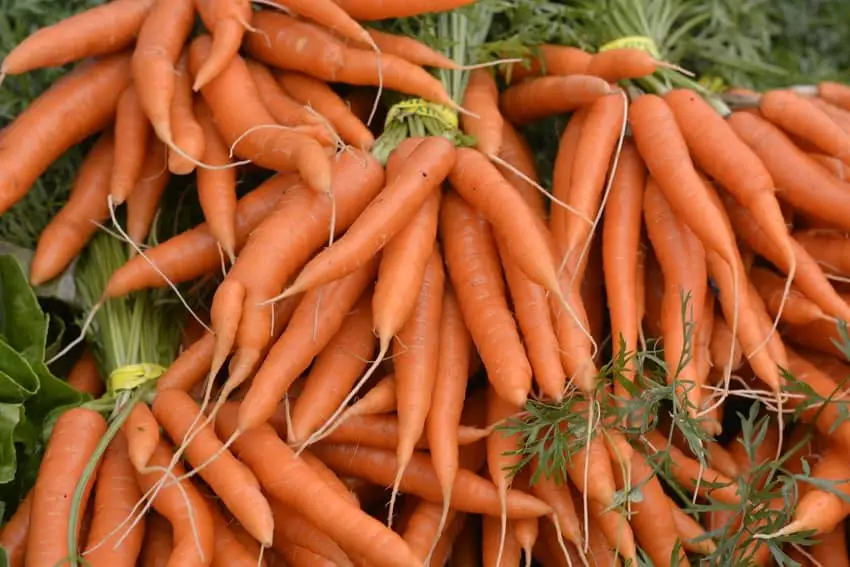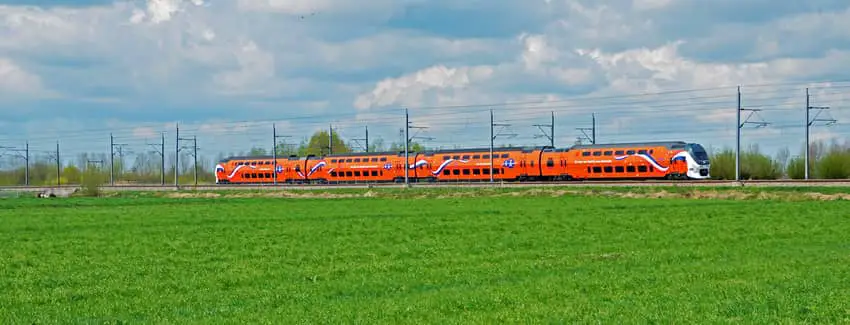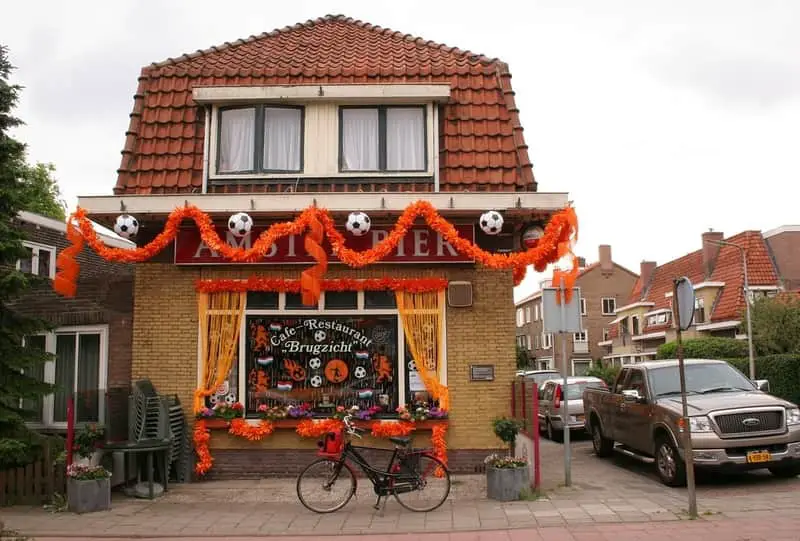Have you ever watched the Dutch national football team participate in championships anywhere in the world? If so, you couldn’t miss the fascinating orange T-shirts and hats worn by their football fans. Why aren’t they blue, white and red like the colours of the flag of the Netherlands? Where does the love for this bright colour come from?
Dutch national orange colour is strongly rooted in the history of the Netherlands. It was the colour of William the Orange who started the Orange-Nassau dynasty. The ‘Orange’ part comes from the principality in south France. It’s a coincidence that the name ‘Orange’ is also a colour.

Okay, the colour orange is connected with the history of the country. But where does the love for this bright colour come from? Why during annual national celebrations like the King’s Day are all people dressed in orange? Why do crowds of people wear orange clothes, eat orange foods and play with orange party stuff? I’ve decided to dive deeply into this to find out what it’s all about.
A Little Bit of History…
The colour orange remains a great part of Dutch culture. Actually, the obsession around the colour can be even noticed while looking for the very roots of the country. The truth is, Oranje – Nassau (in Dutch: Huis van Oranje-Nassau) is how the Dutch Royal house is called. The family, a branch of the German House of Nassau, got the name ages ago when they got involved by marriage with the principality of Orange. Henrik III of Nassau-Breda from Germany married Claudia of Chalon-Orange from France (Burgundy) and this is how the family got entitled to use the name Orange in 1515. Orange refers to the medieval principality in old Provence, in south France. The principality was constituted in 1163 by Holy Roman Emperor Frederick I.

Interesting fact: did you know that carrots weren’t orange a long time ago? They used to be yellow, red, black, purple (the most common colour until 17th century) or white. It was because of the House of Orange that carrots were made orange by crossbreeding wild carrots with white and yellow ones. An orange variant was made in honour of the royal dynasty. Since then, the Dutch are the proud producers of orange carrots for the first time in the world.
The history of Orange is strongly connected with William of Orange (or William the Silent – called this way as he almost never spoke in public, especially when he was supposed to speak on controversies, or ‘Father of the Fatherland’) who was the founder of house, and at the same time the first branch of the family tree. He became Prince of Orange in 1544 when he became Rene of Chalon’s heir (Rene of Chalon was Claudia of Chalon-Orange’s son). William, at the age of 11 back then, inherited Rene’s entire fortune. He organised the revolt against Spanish Habsburgs which led to an independent Dutch state in 1581. Also, this is the same William who lends his name to the Dutch national anthem (the ‘Wilhelmus’). Unfortunately, William of Orange wasn’t able to give the Netherlands a permanent presence in the New World, however, the orange ‘branding’ is part of his legacy. The colour orange is taken from William’s name, as well as from his coat of arms. William of Orange was assassinated in Delft in 1584 and held the office of stadtholder in four of the rebelling provinces. His son, Maurice of Nassau, solidified the independence of the Dutch republic.
So Why Isn’t The Dutch Flag Orange?
Actually, the first Dutch flag did have orange on it. Non-surprisingly, the first colours of the flag originate with the William of Orange. Those are the colours he chose (orange, blue and white), as those were the colours of the House of Orange and the County of Nassau. It is said that Dutch soldiers wore royal colours during the attack on Leiden (1574). On an original version of the flag, the colour orange was the top stripe. The flag was then called the Prince’s Flag (Prinsenvlag). The orange band was changed to red in 1630 and the name of the flag changed to Statenvlag. In 18th century, the flag of the Batavian Republic was used. Then, a new flag (the one used today) was put into use in 1813 when the nation regained independence. Red, white and blue were officially proclaimed to be the flag of the country in February 1937. The top stripe of the flag is red, the bottom stripe is blue and the middle is white. The Dutch flag is probably the oldest tricolour flag in continuous use in the whole world.

Nobody knows, why red stripe of the flag was changed to red. It happened at the end of the 80-year War. Three possible reasons have been brought up:
- it was the result of agreement between the Netherlands and England in which it was decided that members of the House of Orange are not entitled to rule the Dutch state;
- orange paint just faded to red as the dye was too unstable – the stripes turned red after a short time a flag was made. At the time, people didn’t know the colourfast orange pigment. This is why the orange would either fade to yellow or darken to red. As the yellow was too hard to see at sea, the red eventually replaced the orange;
- the colours of the flag come from the Bavarian coat of arms.
Which of The Hypotheses is True?
No one can say for sure. Anyway, what might sound disappointing for the orange supporters, orange, white and blue have been used as national colours of the Union of South Africa since 1928. What is more, the Dutch flag looks almost the same as the flag of Luxembourg. The only exception is a bit shorter design and a bit darker blue stripe. Maybe this is a reason so many Dutch people are so loyal when it comes to their national symbol?
An Orange Outfit As a Way to Celebrate?

Even if the colour orange isn’t one of those on the Dutch flag, it is put above it on special occasions. The Prince’s Flag is still used on some semi-occasional events. Colourful celebration is extremely popular among Dutch people. Orange has come to symbolise the country and the nation, and to signify national pride. At any time a royal birthday takes place, Dutch people fly the tricolour flag with an orange pennant above it. There is also an exceptional day when the Netherlands literally turns orange – April 27th, on King’s Day. You can hear all the streets singing ‘Orange on top, Orange on top. Long live the King!’. It’s interesting to mention that King’s Day celebration has been commemorated since 2014. Before, it was Queen’s Day, because of the previous monarch. Just try to find anyone who is not wearing the colour orange on April 27th! What outfit should you wear if accidentally in the Netherlands on April 27th? Just wear as much orange as possible. Whatever you can think of wearing on King’s Day, wear it in orange. Most people wear at least an orange T-shirt, some go all out. You can go with an orange wig, shoes, watch or just have an orange hat or bracelet.
Go Oranje!

Even if the colour orange is not on the Dutch flag anymore, it’s believed to symbolise being a Dutch and a broader pride in the country. The obsession with the colour started in the later 20th century and it’s especially noticeable during international sport events. There is even a colloquial word describing an obsession with the colour – Oranjegekte (Orange craze) or Oranjekoorts (Orange fever). It was first observed in 1974 during the World Cup. Almost 40 thousand Dutch fans attended every single game and followed the team. The Dutch team made it to the final and lost to West Germany. It didn’t dampen the Dutch enthusiasm though. The orange craze has been even compared by many to the Scottish Tartan Army.
Oranje is the nickname of the Dutch national soccer team, mainly because they play in orange kits. On various international sport occasions Dutch people colourise whole sport-grounds in orange. To be honest, those are not only sport-grounds but also whole cities and streets. Those days, Dutch fans wear hats, T-shirts and scarves. Sometimes the most ardent fans even manifest their national pride by painting their houses, cars and shops. At any time the Dutch soccer team participates in an international event, nobody can miss the legions of Dutch fans dressed in orange. It’s all because Dutch people are royalists in general. They often tend to do it all in the name of the king and queen. Very often one of the ways to show that is using the national colour of orange. You may have also heard of the case when one of Boeing 777 airplanes were painted orange by KLM Royal Dutch Airlines.
Besides sports, the colour orange is of great importance to commerce. Big companies (like Heineken or Albert Heijn’s) often introduce special orange editions of their regular products. They also introduce some special goodies for events like World Championships etc. The national team – Oranje – is also referred to in occasional songs produced by the Dutch artists.